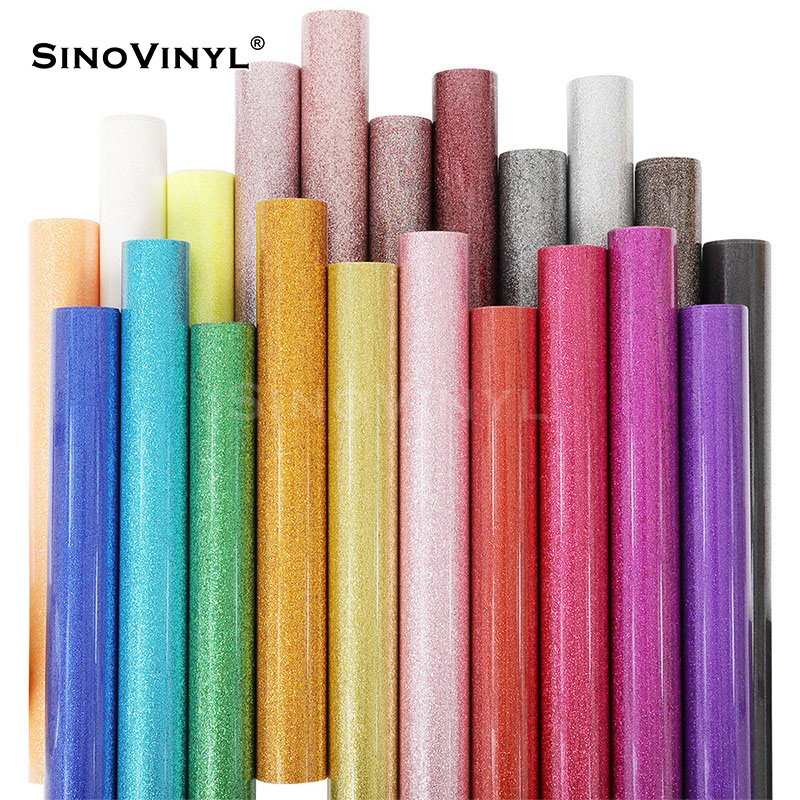Types and Varieties of Heat Transfer Vinyl
Heat Transfer Vinyl (HTV) comes in various types, each with its own unique characteristics and applications. Here are some of the most common types of HTV:
1. Standard HTV:
– Characteristics: Standard HTV is the basic, go-to vinyl used for most heat transfer applications. It is typically made of a polyurethane (PU) material and is available in a wide range of colors. It has a smooth, matte finish.
– Applications: It’s versatile and can be used on a variety of fabrics, making it suitable for customizing apparel, bags, accessories, and more.
2. Glitter HTV:
– Characteristics: Glitter HTV is infused with tiny sparkles or glitter particles, adding a flashy and eye-catching effect to designs. It’s typically made of a thicker material to accommodate the glitter particles.
– Applications: This type is popular for creating designs that require a touch of glam or for occasions where you want a bit of extra sparkle, such as dancewear, special event apparel, and fashion accessories.
3. Metallic HTV:
– Characteristics: Metallic HTV has a shiny, metallic finish that mimics the appearance of metal. It’s often made from a PU material and is available in various metallic shades.
– Applications: Metallic HTV is great for designs that need a sleek and reflective finish. It’s commonly used for creating logos, monograms, and accents on apparel and accessories.
4. Flocked HTV:
– Characteristics: Flocked HTV has a soft, velvety texture. It’s made of tiny fiber particles that give it a suede-like feel.
– Applications: This type is ideal for designs that require a tactile element, such as lettering on sports jerseys, pillows, or any project where a plush, textured finish is desired.
5. Reflective HTV:
– Characteristics: Reflective HTV is designed to reflect light, making it highly visible in low-light conditions. It contains glass beads that enhance its reflective properties.
– Applications: It’s commonly used for safety apparel, outdoor gear, and sportswear to increase visibility during nighttime activities.
6. Glow-in-the-Dark HTV:
– Characteristics: Glow-in-the-dark HTV absorbs light and glows in the dark after being charged by a light source. It’s typically made with a phosphorescent material.
– Applications: This type is fun for creating playful designs on apparel, accessories, and home decor items that have a unique glow after dark.
7. Patterned HTV:
– Characteristics: Patterned HTV features various designs, textures, or prints. These can range from geometric patterns to florals, and more.
– Applications: Patterned HTV is great for adding intricate and detailed designs to apparel, bags, and other fabric items.
By understanding the unique characteristics of each type of HTV, you can choose the one that best suits your project’s requirements and desired aesthetic. Keep in mind that some types may require special handling or application techniques, so be sure to follow the manufacturer’s instructions.














